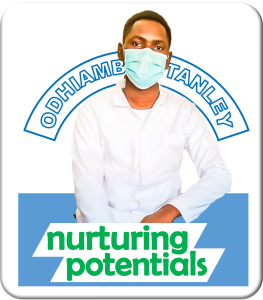Course Outline
Course Outline
Programme: Diploma, Medical Laboratory Sciences
Course Code: BML 323 Course Title: Medical Entomolgy & VB (4 units)
2. Course Purpose
This course is designed to enable the learner to study the pathology and clinical features associated with various arthropods vectors in or on the human body. He/ She will also be able to participate in conducting a number of laboratory procedures vital in the identification of human/animal arthropod infestations and the diseases they transmit.
3. Learning Objectives/Outcomes:
By the end of this course the student should be able to:
1. Describe the classification and taxonomy of parasitic arthropod/vector agents of medical importance
2. Describe the characteristics and life cycles of arthropods of medical importance
3. Describe and perform investigative procedures used in the identification of arthropods of medical importance
4. Make laboratory diagnosis in human/animal cases of arthropod/vector infections/infestations.
4. Learning/Teaching Strategy:
Lectures, laboratory practical, demonstrations, group discussions.
5. Topic Outline
|
Week |
Topic |
|
1. |
Introduction to Medical Entomology |
|
2. |
Advantages & disadvantages of arthropod/vectors of medical importance |
|
3. |
Morphology and Biology of arthropods/vectors |
|
4. |
CAT I |
|
5. |
General control methods for arthropods |
|
6. |
Vectors of medical importance I; Mosquitoes and Simulium |
|
7. |
Vectors of medical importance II; Tsetse flies |
|
8. |
Vectors of medical importance III; Molluscs and Phlebotomines |
|
9. |
Vectors of medical importance IV; Fleas and Ticks |
|
10. |
CAT II |
|
11. |
Immunological methods used for identification of parasitic arthropod vectors |
|
12. |
Arthropod preservation techniques, Existing public health problems by arthropods |
|
13. |
Exams |
|
14. |
Exams |
6. Course Requirements:
A) Attendance
Attendance for lectures, and other scheduled classes/practical/laboratory sessions is mandatory for all students. Any absence will prohibit the student from taking CATs/Practical and/or Main examination.
B) Methods of Assessment
i. Continuous Assessment Test 20%;
ii. Practicals/Take away assignments 20%
iii. End of Trimester Examination 60%
C) Pass mark written exam 50%
D) Course Texts including Further reading/Reference Texts
· Murray (1998). Medical Microbiology, 3rd Edition
· Lippincott (2006). Color Atlas and Textbook of Diagnostic Microbiology, 6th Edition
· Herms. Medical Entomology
· Satoskar (2009). Medical Parasitology
· Nester (1998). Microbiology, a human perspective.
